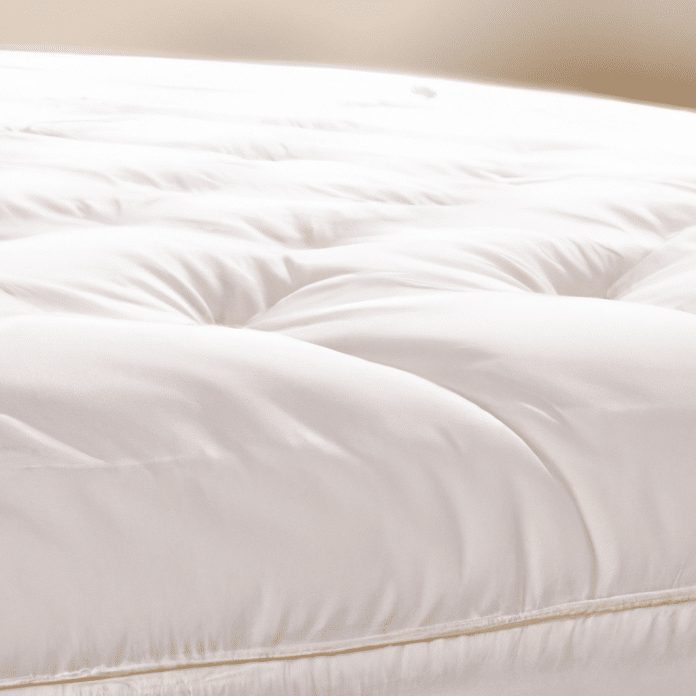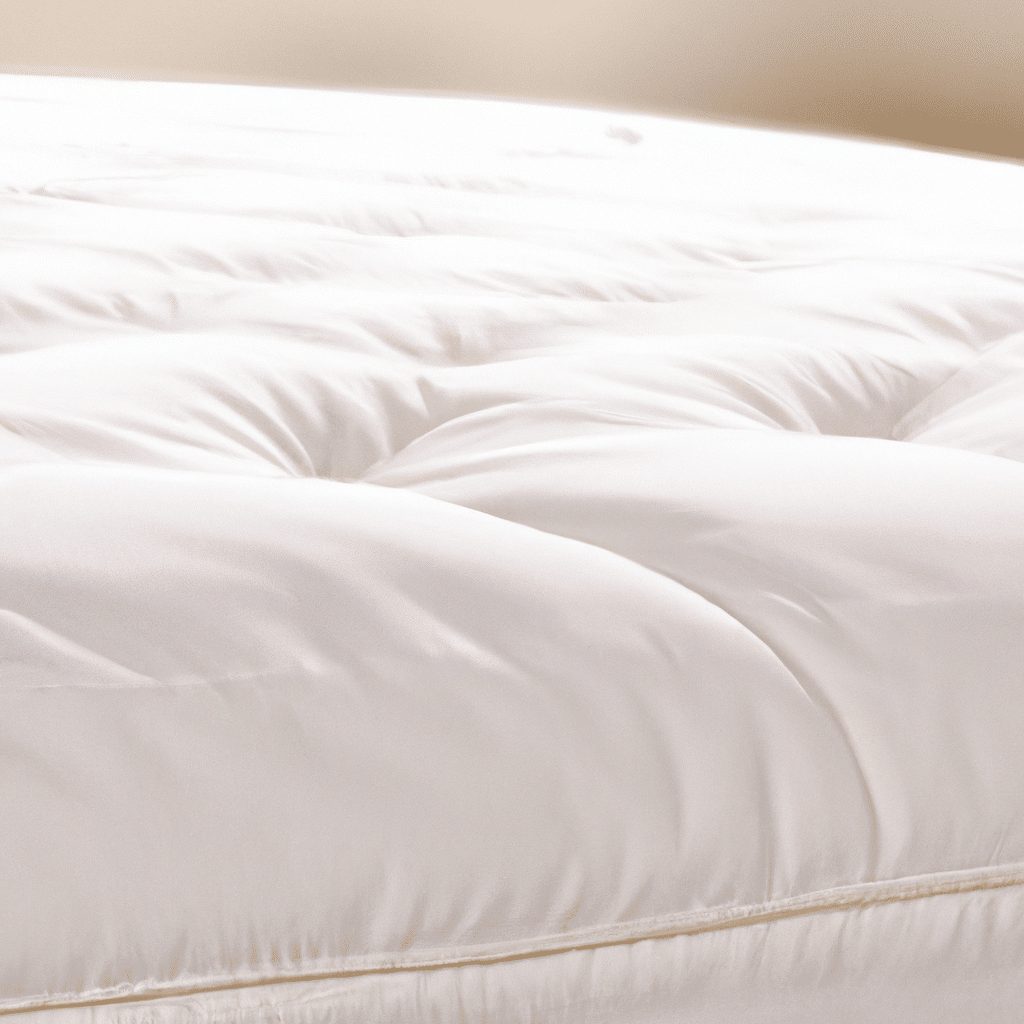Have you ever noticed those annoying indentations on your mattress, where it seems like the surface just sinks in? We’ve all been there, tossing and turning trying to find a comfortable spot, only to be met with a saggy abyss. But have you ever wondered what exactly causes these dreaded mattress indentations? In this article, we’ll uncover the culprits behind this common issue and explore some possible solutions to help you get a restful night’s sleep. So, say goodbye to those pesky sagging spots and get ready to wake up feeling refreshed and rejuvenated! Have you ever wondered what causes those unsightly indentations in your mattress? Well, fear not! Today, we’re going to dive into the various factors that can lead to mattress indentations, and how you can avoid them. From material breakdown to poor mattress support, there are several culprits that can contribute to this issue. So, let’s get started and discover the secrets behind those pesky indentations!
Review contents
Material Breakdown
One of the main reasons for mattress indentations is the breakdown of materials over time. As we lay on our mattresses night after night, the materials within them start to break down, resulting in uneven support and visible sinking areas. Most mattresses are made up of multiple layers of foam and other materials, and it’s the compression of these layers that can cause indentations to form over time.
Poor Mattress Support
Another common cause of mattress indentations is poor support. If your mattress doesn’t have a solid foundation or a proper bed frame, it can easily sag and develop indentations. When a mattress lacks the necessary support, it is more likely to sink in areas where pressure is concentrated, such as the hips and shoulders. Therefore, it’s crucial to invest in a sturdy foundation or bed frame that can evenly distribute your body weight and provide adequate support throughout the mattress.
Inadequate Rotating and Flipping
When was the last time you rotated or flipped your mattress? Neglecting to regularly rotate and flip your mattress can also contribute to indentations. By rotating your mattress every few months and flipping it every six months, you can distribute the wear and tear more evenly. This prevents excessive pressure on specific areas of the mattress and helps maintain its shape and support over time.
Body Weight and Pressure
Our body weight and pressure play a significant role in the formation of mattress indentations. Over time, constant pressure from our bodies can cause certain areas of the mattress to compress more than others. This is particularly true for individuals who are heavier or have a higher body mass index (BMI). The more pressure that is applied to a specific area, the more likely it is to develop an indentation. If you fall into this category, consider investing in a mattress that is specifically designed to support heavier weights or has reinforced areas to prevent excessive sinking.
Improper Use of Mattress
Using your mattress improperly can also lead to indentations. For example, sitting on the edge of your mattress frequently or using it as a trampoline can cause the materials to compress unevenly. Additionally, jumping or bouncing on the mattress can accelerate the breakdown of materials and create indentations. To prolong the lifespan of your mattress and prevent indentations, it’s important to use it for its intended purpose – a comfortable and supportive surface for sleeping.
Natural Wear and Tear
As with any product, mattresses experience natural wear and tear over time. The more you use your mattress, the more likely it is to develop indentations. As the materials within the mattress compress and break down, it’s only natural for indentations to form. While you can’t entirely prevent natural wear and tear, you can slow down the process by following proper mattress care guidelines and investing in a high-quality mattress.
Temperature and Humidity
Believe it or not, temperature and humidity can also play a role in the formation of mattress indentations. Mattresses are often made up of materials that are sensitive to changes in temperature and humidity, such as memory foam. These materials can soften and become more malleable in warmer conditions, which can lead to increased sinking and indentations. Similarly, high humidity levels can affect the integrity of the materials, causing them to break down more quickly. To minimize the impact of temperature and humidity on your mattress, ensure proper ventilation in your bedroom and consider using a mattress protector.
Inferior Mattress Construction
Sometimes, mattress indentations are simply the result of poor construction. If a mattress is manufactured using subpar materials or lacks proper reinforcement, it is more susceptible to indentations. Low-quality foam, insufficient springs, or inadequate stitching can all contribute to premature breakdown and the formation of indentations. When shopping for a new mattress, be sure to choose a reputable brand that uses high-quality materials and has a solid track record of durability.
Inadequate Foundation or Bed Frame
We briefly touched on the importance of proper support, but let’s delve a bit deeper. An inadequate foundation or bed frame can significantly contribute to mattress indentations. If your foundation or bed frame doesn’t provide enough support or has uneven slats, it can cause areas of the mattress to sink more than others. This can lead to visible indentations and an uncomfortable sleeping surface. To ensure optimal support and prevent indentations, make sure your foundation or bed frame is suitable for your specific mattress type and size.
Manufacturer Defects
Lastly, but certainly not least, manufacturer defects can also be responsible for mattress indentations. While rare, these defects can occur during the manufacturing process, resulting in subpar quality and premature breakdown. If you notice indentations forming shortly after purchasing a new mattress, it’s worth reaching out to the manufacturer to inquire about warranty coverage or a potential replacement. Most reputable mattress manufacturers offer warranties that protect against defects and premature sinkage.
In conclusion, mattress indentations can be caused by a variety of factors – from material breakdown and poor support to improper use and natural wear and tear. By understanding the root causes of indentations, you can take proactive measures to prevent them and ensure your mattress remains comfortable and supportive for years to come. Remember to invest in a high-quality mattress, use it properly, rotate and flip it regularly, and provide adequate support through a suitable foundation or bed frame. With the right care and attention, you can enjoy a mattress that stays firm, supportive, and free from unsightly indentations.

































